What Is an Absorbent Glass Mat (AGM) Battery?
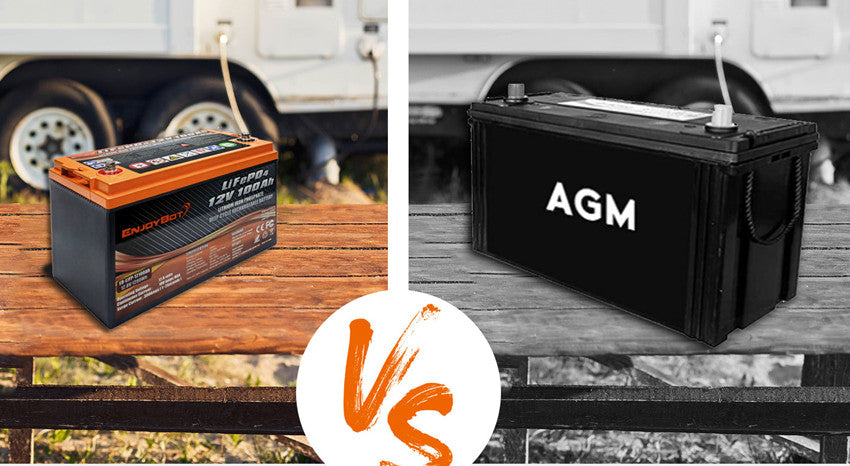
What Is An Absorbent Glass Mat (AGM) Battery?
We are gotta know–the thing you are most concerned about when it comes to your battery is that it gives you the power you need. But you do understand the different types can be crucial to selecting the right one to keep you powered up and on the go. While you may be somewhat familiar with old-school flooded lead-acid batteries, you may know less about AGM batteries and their benefits and drawbacks of this style. In this blog, you will learn what is an AGM Battery.
What is an AGM Battery?
At its core, an AGM is still a type of lead-acid battery. AGM is standing for absorbent glass mat, which refers to the technology those devices use to create power. The fiberglass mat is installed between the positive and negative lead plates of the battery. As its name suggests, it absorbs the glass mat and holds the battery acid. In this way, it can flow around the battery orderly.
The AGM battery is also referred to as SLA (Sealed Lead Acid) or VRLA (Valve Regulated Lead Acid) batteries. The technology used to make them newer, having first come up in the mid-1980s.
Deep Cycle and AGM Battery Introduction
Deep cycle batteries are divided into lead-acid batteries and lithium iron phosphate batteries and they are known as the marathon runners of the battery world. Rather than providing a short burst of lots of power, they supply a lesser amount of power for long periods of time. Deep cycle batteries are common among people who own RVs or Boats and are also seen used with golf carts and solar panel systems. Absorbed glass-mat (AGM) batteries are a lead-acid type with a similar approach to the deep cycle battery's working mechanism. AGM battery is designed for two jobs: sending powerful bursts of starting amps and running electronics for a long time.
Since the AGM battery can be considered as a type of deep cycle battery in many cases, there aren’t many differences between the two but some slight key distinctions as listed below.
Discharge Capacity
The capacity for an AGM battery differs case by case since not all of them handle deep discharge in the same way. Both AGM and deep cycle batteries handle spillage issues well. Typically, a deep cycle battery has a thick plate for deeper discharge purposes which also helps in preventing damage.
Discharge Rates
A deep cycle battery has a lower discharge rate overall, especially for lithium-ion and Gel types.
You can check your battery's discharge rate on the specs sheet that comes with it for specific information.
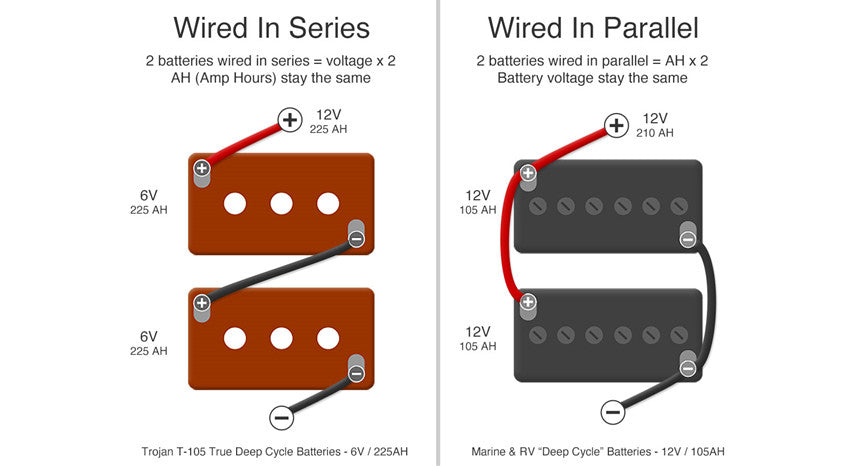
Deep Cycle Battery Overview
A deep cycle battery is primarily meant for nearly complete discharge on a regular basis, without the extent of suffering damage, unlike traditional batteries. It uses the same form as a car battery but delivers greater currents over a longer period of time.
What is the Difference Between an AGM and Flooded Lead-Acid Battery?
This absorbent glass mat design is the primary difference between AGM and flooded lead-acid batteries. The traditional lead-acid battery simply uses lead plates suspended in the electrolyte solution while the liquid flows freely around them.
As mentioned earlier, AGM batteries are still lead-acid batteries, just in a different design. This battery still suffers many of the same problems that traditional flooded lead battery have but do offer a few benefits.
What Are AGM Batteries Used For?
AGM battery is best used in starting applications. You will most commonly find them in vehicles like cars, trucks, RVs, boats, and other motorized vehicles. The AGM battery provides intense bursts of power as a starting battery. While they can be used for energy storage applications, their cost and poor performance make them a less than ideal choice for these applications.
Benefits of AGM Battery and Flooded Lead-Acid Battery
So why would someone consider an AGM battery instead of the flooded lead-acid versions you have likely been using for years or decades?
Less Maintenance Than Flooded Lead-Acid
You have to open up flooded lead-acid batteries to make top off their fluids periodically to maintain the correct balance of electrolytes and water. Without this necessary maintenance, your battery won’t operate as efficiently as possible and eventually become damaged. There is no similar requirement for AGM batteries, as they are sealed by design. This means they are virtually maintenance-free.
AGM batteries can install non-vented
You are able to install an AGM battery in a non-vented way. You have to vent traditional batteries from time to time, as they release gases as part of their normal operation. These can be building up with corrosive or even potentially explosive consequences without proper ventilation. This lack of venting requirements means more flexibility in installation.
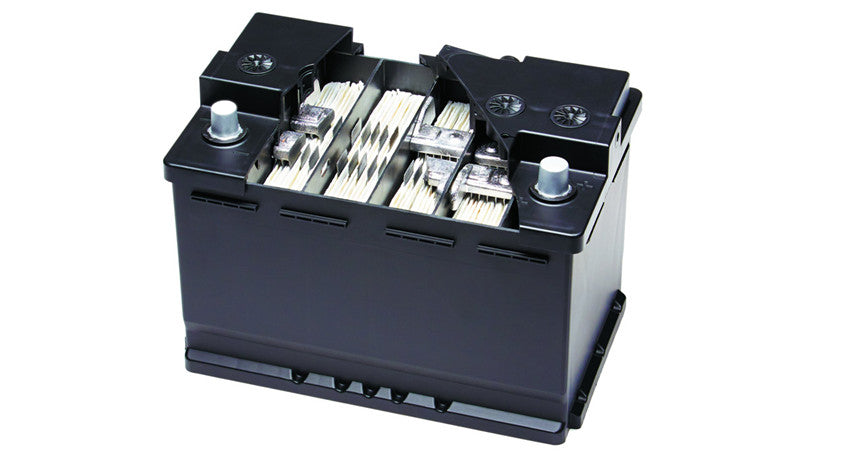
AGM battery can be installed in different positions
The installation benefits of AGM batteries go far beyond helping with venting. While you have to install a traditional flooded lead-acid battery right-side-up to prevent fluid leaks, the AGM battery has no such restrictions because it is sealed. That means you are able to install it upside down, on its side, or in any other position without significant effect on battery operation. In a crowded engine compartment or a small RV battery space, this feature can be incredibly helpful in freeing up additional space.
Weighs
Compared to most lead-acid batteries, the AGM battery is lightweight and less harmful when handling, which proved to be very useful for both aircraft and cars alike.
They allowed more users to transport them easily without the dangers of leaking, and the fiberglass mat also allowed for changes in the battery design to take on a cylindrical form instead of the rectangular design.
Another difference worth noting is the smaller acid amounts compared to traditional lead-acid batteries, which are absorbed by the fiberglass mat even when the battery breaks.
Although AGM batteries have these advantages, they are still inferior to the new technology of lithium iron phosphate batteries.
Drawbacks of AGM Batteries and Flooded Lead Acid Batteries
While AGM batteries have many benefits, their main drawback is the cost.
AGM batteries tend to cost quite a bit more than flooded lead-acid batteries. This price differential may be worth it if you are using it for the correct applications. As a starting battery, this could be very beneficial, but for energy storage and deep cycle, the price increase compared to their performance is not worth it.
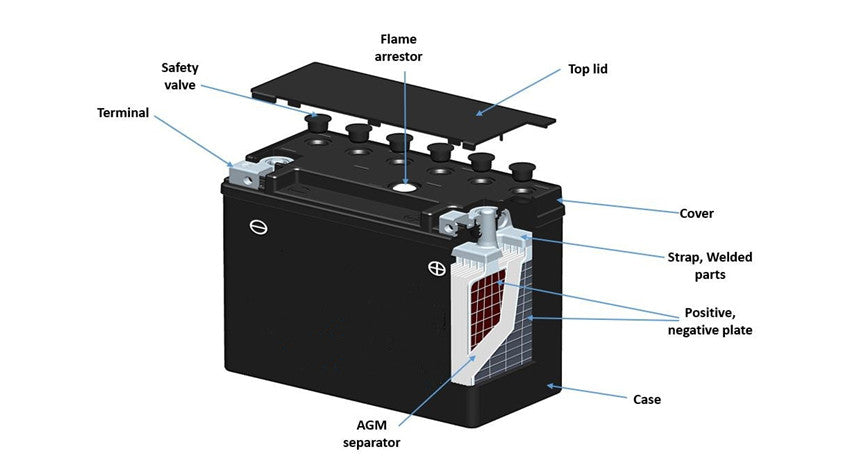
AGM Batteries and Lithium Batteries
While AGM batteries have some significant advantages over typical flooded lead-acid batteries, they don’t compare at all to lithium-iron phosphate batteries in storage applications. Lithium battery has some major upsides compared to all lead-acid batteries. They are a favorite for their lower weight and higher energy efficiency, the ability to completely discharge, better operation in extreme temperatures, and longer life overall.
The only application where an AGM battery will currently outperform a lithium battery is in engine starting applications. The AGM batteries are good at providing huge amounts of current for short periods of time as long as they are recharged immediately.
How Long Does an AGM Battery Last?
The short answer is it depends. In starting applications, you may find AGM batteries last longer than flooded lead-acid batteries. Generally, you can expect an AGM to last for 6 to 8 years in a starting application.
For storage applications, flooded and AGM batteries are equally good.
For deep cycle storage applications, it is not uncommon to see a cycle life of around 300-500 cycles if you charge your battery fully and regularly. This drops if you let your battery drain too low or only partially recharge them. This tends to have around 2 years of usable life in moderate use.
Do AGM Batteries Worth It?
When you are considering upgrading the vehicle, your battery may not always be top of mind. But AGM batteries can provide significant advantages to just about anyone who currently uses traditional flooded lead-acid batteries.
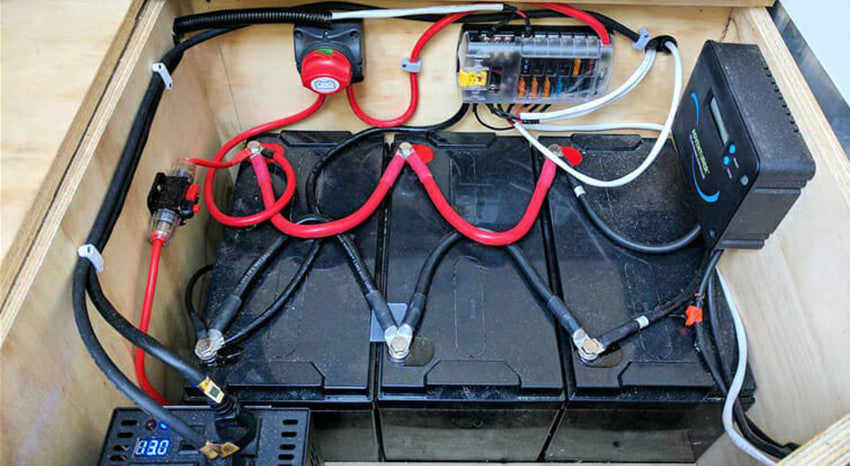
Conclusion
From above all, if you are looking to upgrade a storage application or a deep cycle application, you will want to skip AGM batteries and go straight to the lithium-iron-phosphate battery upgrade. In the long run, it will be cheaper, safety, and much less of a hassle.
While AGM batteries are generally considered better than traditional flooded lead-acid, lithium-iron phosphate battery is still the king of 12v batteries.






























